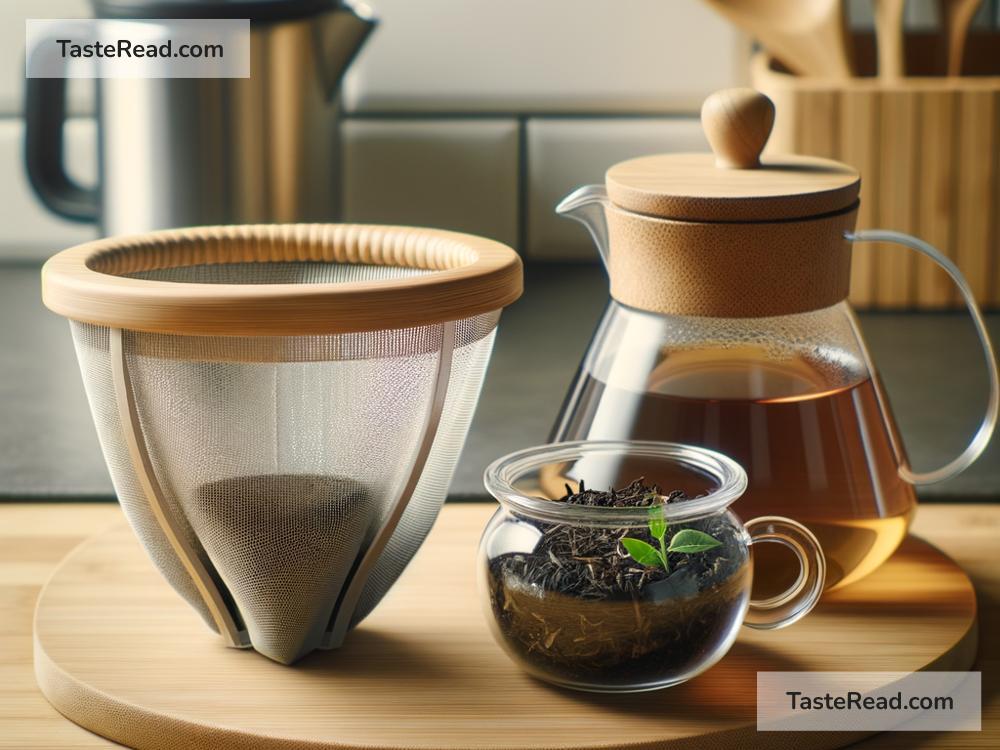Zero-Waste Techniques for Brewing Coffee and Tea
In today’s rapidly changing environment, many of us are looking for ways to minimize our carbon footprint and lead more sustainable lives. Among the various daily habits that can make a significant difference in reducing waste, our coffee and tea routines stand out. For countless people, the day doesn’t start without a fragrant cup of coffee or tea. However, the convenience of single-use coffee pods, tea bags, and disposable cups has contributed to an increase in unnecessary waste and environmental damage. Thankfully, adopting zero-waste techniques for brewing coffee and tea is simpler than you might think, and I’m here to guide you through it.
Go Back to Basics
1. Use Loose Leaf Tea and Whole Coffee Beans
One of the easiest ways to start is by switching from tea bags and pre-ground coffee to loose leaf tea and whole coffee beans. Not only does this reduce packaging waste, but it also elevates the quality of your brew. Loose leaf tea and freshly ground coffee beans offer a fuller flavor profile, making your morning cup all the more enjoyable. To store these, opt for reusable containers instead of plastic bags or packets.
2. Invest in a Good Quality Grinder
For those who are coffee enthusiasts, investing in a good quality burr grinder is crucial. Grinding your coffee beans right before brewing enhances the freshness and taste of your coffee. On the flip side, for tea lovers, a simple reusable tea infuser will do the trick.
3. Choose Reusable Over Disposable
Ditch the paper filters and plastic pods. For coffee, consider using a French press, a stainless steel pour-over filter, or an espresso machine with a built-in filter. As for tea, a stainless steel or silicone tea infuser can be used multiple times and with various kinds of loose leaf teas. Not only do these options reduce waste, but they also offer you control over the strength and flavor of your brew.
Embrace Modern Innovations
1. Biodegradable and Compostable Options
If convenience is key and you can’t let go of your coffee pods or tea bags, look for biodegradable or compostable options. Several companies are now producing eco-friendly coffee pods that can be composted, reducing the amount of waste significantly. Similarly, there are brands that sell tea bags made from biodegradable materials. When shopping for these, make sure to check that the entire product, including the packaging, is compostable.
2. Eco-friendly Coffee Makers and Teapots
The market is also seeing an influx of eco-friendly coffee makers and teapots designed to minimize energy consumption and waste. These devices often come with permanent filters or are compatible with reusable options, making them a great investment for those looking to adopt a zero-waste lifestyle.
Creative Uses for Coffee and Tea By-products
1. Composting Coffee Grounds and Tea Leaves
After brewing, don’t be quick to dispose of your coffee grounds and tea leaves. Both are great for composting and can add valuable nutrients to your garden soil. If you’re not into gardening, look around for local community gardens or friends who might benefit from these compostable materials.
2. Repurpose as Natural Deodorizers
Coffee grounds can absorb and eliminate odors. Place a bowl of dried coffee grounds in your refrigerator or use them in your shoes to keep them smelling fresh.
3. DIY Skin Care
Coffee grounds and tea leaves can be repurposed into DIY exfoliating scrubs. Mix them with a bit of coconut oil or honey for a natural, eco-friendly skin care routine.
Community Engagement and Advocacy
Embracing a zero-waste lifestyle doesn’t stop at individual actions. Engage with your community by sharing your knowledge and encouraging coffee shops and tea houses to adopt more sustainable practices. Support businesses that prioritize sustainability by using biodegradable packaging, offering discounts for customers who bring their own cups, and actively working to reduce their environmental impact.
The Journey of a Thousand Miles
Transitioning to a zero-waste coffee and tea routine is a journey, not a destination. It’s about making small, conscious decisions every day that, collectively, can have a profound impact on our planet. It doesn’t have to be perfect from the start, but each step you take towards reducing waste counts. Embrace the process, experiment with different brewing methods, and find what works best for you and the environment.
In the end, the goal is to enjoy your beloved coffee and tea in a way that respects our planet and its future. By adopting these simple zero-waste techniques, you not only enhance your daily ritual but also contribute to a more sustainable and waste-free world.


